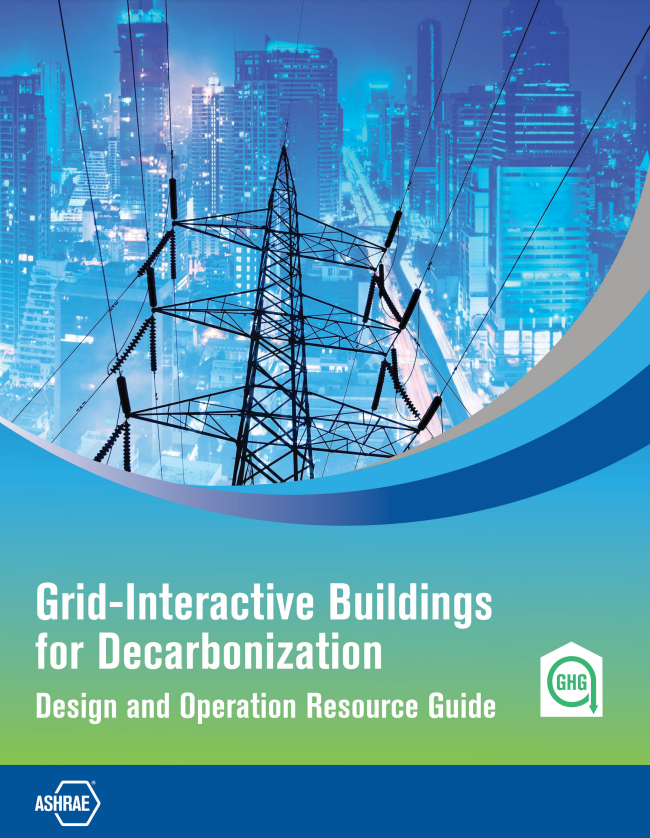Posted by Johann Nacario — January 5, 2024 — Global building technology society ASHRAE has released a new guide focusing on the critical role of grid interactivity in the decarbonization process.
The Grid-Interactive Buildings for Decarbonization: Design and Operation Resource Guide is the second in a series of guides developed by the ASHRAE Task Force For Building Decarbonization (TFBD). It provides information on maximizing carbon reduction through buildings’ interaction with the electric power grid.
 ASHRAE TFBD Chair Kent Peterson P.E., Presidential Fellow, remarked:
ASHRAE TFBD Chair Kent Peterson P.E., Presidential Fellow, remarked:
Grid-interactive buildings actively engage with the energy grid. They utilize smart technologies, renewable energy sources, and energy storage systems to optimize energy consumption and generation. This allows them to respond in real-time to grid signals, thereby reducing overall demand and GHG emissions. Integrating buildings with the electrical grid is a critical component in the decarbonization process. It’s an emerging focus for building professionals, and ASHRAE is thrilled to provide new guidance as we collectively work towards a more sustainable, resilient, and energy-efficient built environment.
Decarbonizing the electric grid necessitates a fundamental shift towards a dynamic, two-way relationship between buildings and the grid. This approach enables buildings to respond flexibly to grid conditions, including time-varying carbon emissions rates. In recent years, the significance of this two-way communication has grown, driven by the integration of renewable energy sources, grid reliability concerns and the impact of extreme weather conditions. These factors have prompted utilities, grid operators and the building community to reassess the role buildings can play in supporting grid reliability and decarbonization by reshaping their energy consumption patterns.
The guide offers best practices, design considerations and operational guidelines to target the three primary value streams of grid integration:
- Reduced Carbon Emissions: Learn how to make significant contributions to reducing carbon emissions through smart building-grid interaction.
- Cost Savings: Discover strategies to optimize energy usage and save on operational costs.
- Resiliency: Enhance your building’s ability to withstand and adapt to changing grid conditions, ensuring uninterrupted operations.
While the guide primarily focuses on commercial and multifamily buildings, it also includes relevant aspects for the residential and industrial sectors. In addition to design guidance, the resource guide provides operational recommendations for both new and existing buildings, empowering them to optimize their available demand flexibility.
The Grid-Interactive Buildings for Decarbonization: Design and Operation Resource Guide may be purchased from the ASHRAE Bookstore.
The ASHRAE Task Force For Building Decarbonization (TFBD) webpage includes technical resources, information, videos and publications to expedite the adoption of climate change mitigation policies and reaffirms the Society’s goals stated in the ASHRAE Vision 2020 report, approved by ASHRAE’s board of directors, as well as the ASHRAE Position Document on Building Decarbonization, to achieve net zero GHG emissions in operation for all new buildings by 2030.
ASHRAE will host the seminar “Grid-Interactive Buildings for a Decarbonized World,” where the guide, as well as project case studies that helped in the guide’s development, will be presented, in January. The seminar will take place at the 2024 ASHRAE Winter Conference, January 20-24, 2024, in Chicago. Conference registration is open now.




